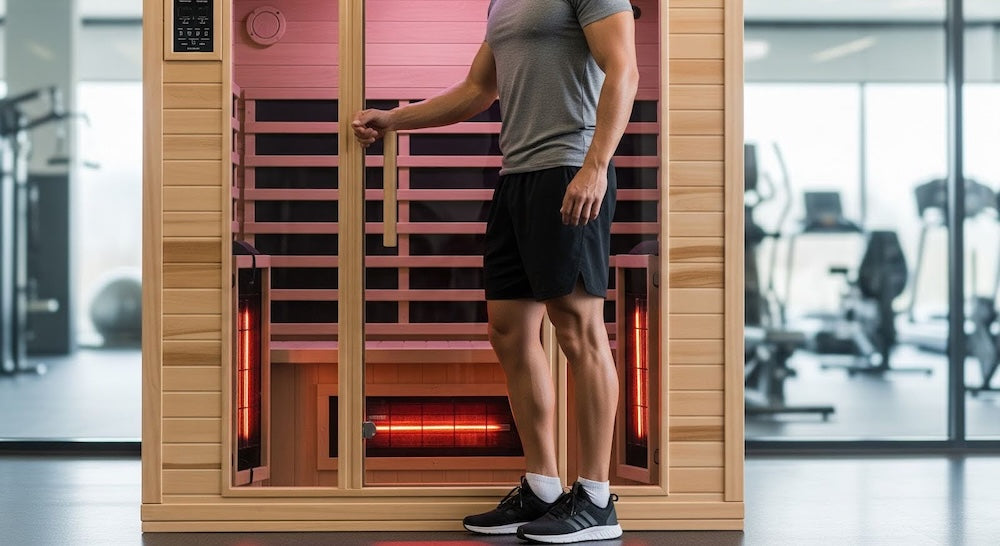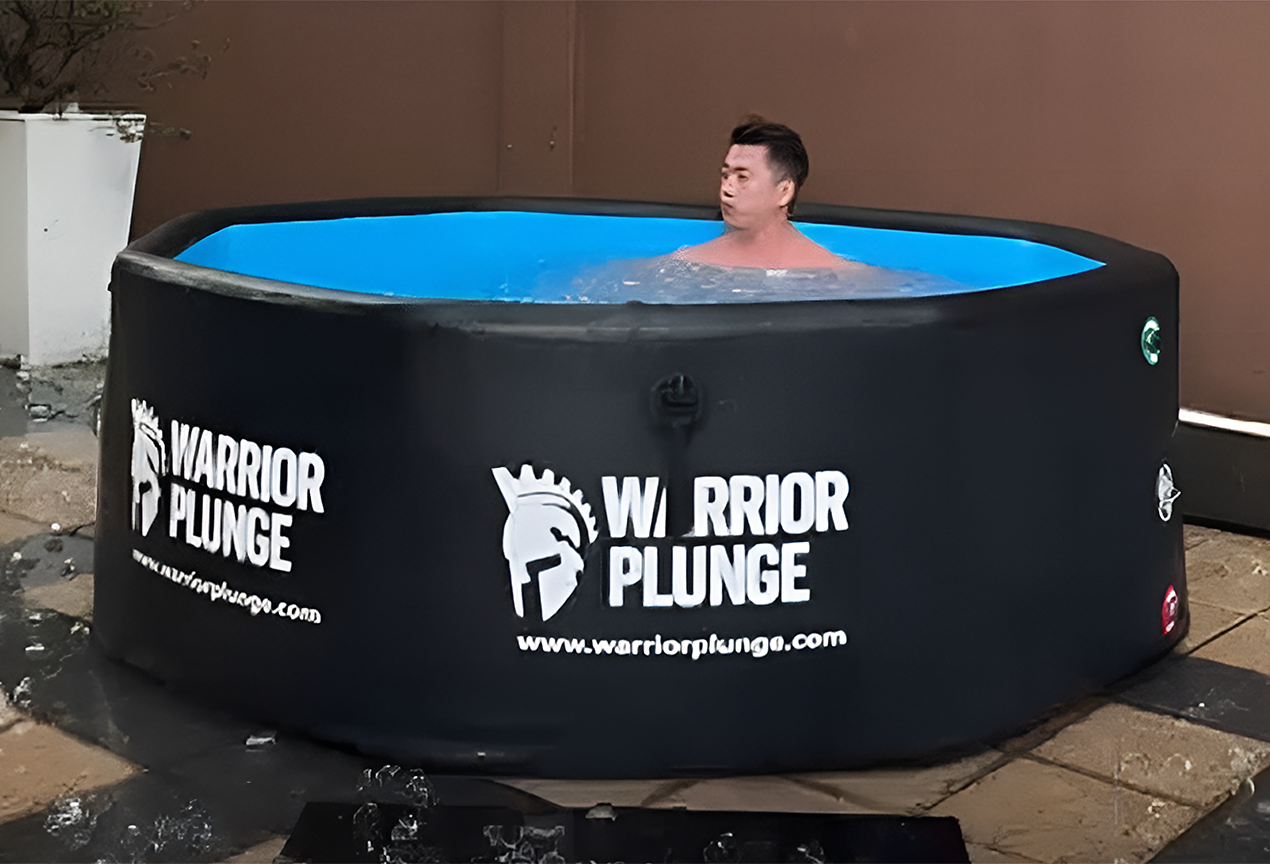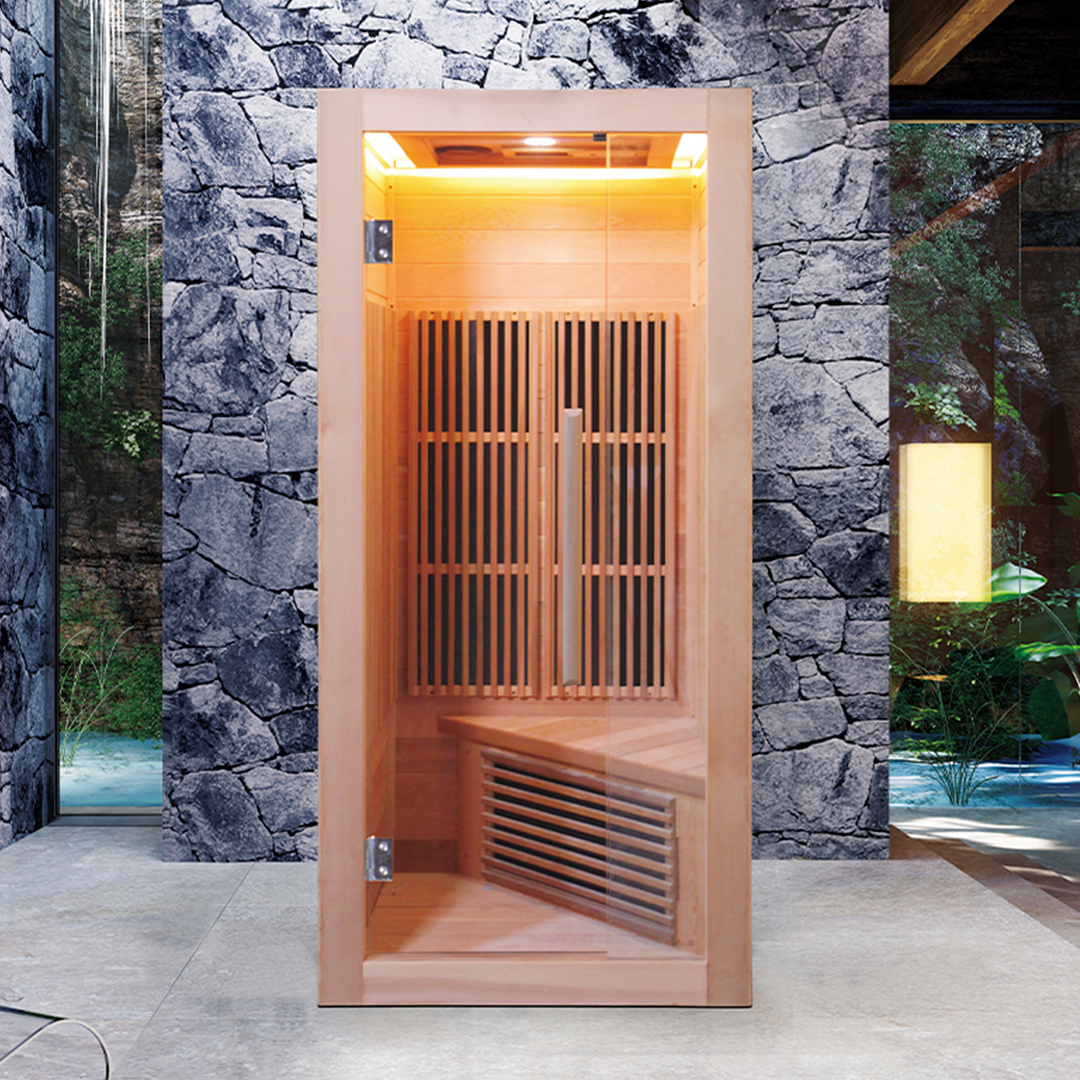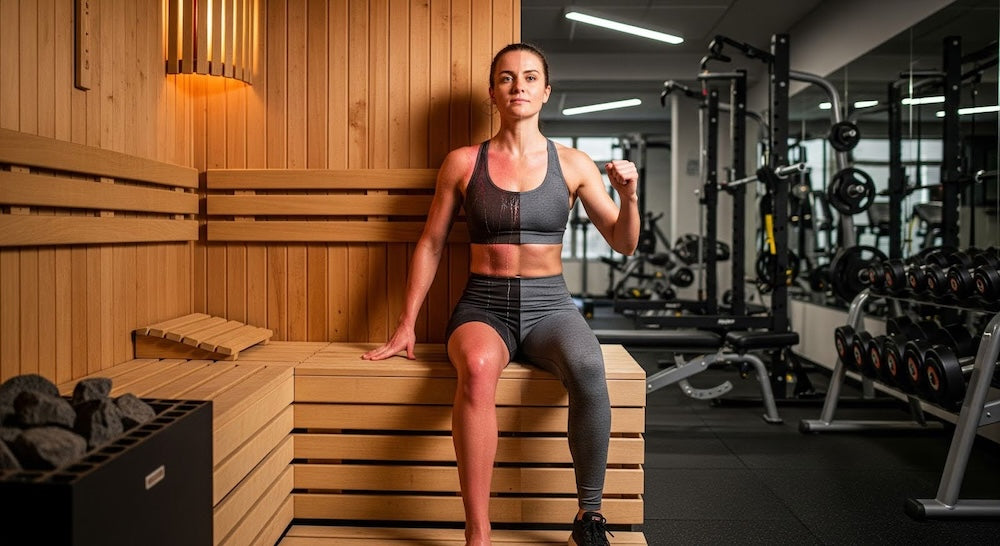Key Takeaways
-
Post-Workout Timing Superior: Sauna after exercise reduces muscle soreness by 20-30% and enhances fat loss by 15-25% without compromising performance—optimal for most training goals
-
Pre-Workout Limitations: Pre-exercise sauna improves flexibility but reduces power output by 10-15% and workout duration by 15-25% for high-intensity training
-
Duration Guidelines Matter: Optimal post-workout sessions are 10-30 minutes depending on experience, requiring 200-400 ml additional fluid per minute
-
Safety Considerations Critical: Those with cardiovascular conditions, on medications affecting thermoregulation, or experiencing illness should consult healthcare providers first
-
Professional Equipment Maximizes Benefits: Warrior Plunge's precision-controlled systems provide optimal recovery through consistent temperatures and safety monitoring
Introduction
The timing of your sauna session can dramatically impact your workout performance, recovery, and results. Whether you step into the heat before hitting the weights or unwind in the sauna post-exercise, each approach offers distinct physiological benefits and potential drawbacks.
This comprehensive guide examines the science behind sauna timing, helping you optimize your routine for maximum performance gains, enhanced recovery, and improved fat loss. You'll discover when heat therapy works best for your goals, proper session protocols, and safety considerations that ensure effective results without compromising your health.
Should You Sauna Before or After a Workout?

The optimal timing depends on your primary goals and training intensity. How timing impacts performance, recovery, and fat loss varies significantly based on when you expose your body to heat stress relative to exercise demands.
-
Pre-workout sauna use elevates core temperature, increases heart rate, and enhances flexibility—potentially improving performance for some activities while potentially reducing stamina for others.
-
Post-workout sauna sessions focus on recovery, muscle relaxation, and metabolic benefits without interfering with exercise intensity.
-
Physiological Impact of Pre-Workout Sauna: Your body temperature rises by 1-3°C, blood flow increases to skin and muscles, and heart rate elevates to 100-150 beats per minute. This cardiovascular activation can serve as an extended warm-up but may also deplete energy reserves before intense training.
-
Post-Exercise Heat Therapy Benefits: After exercise, sauna use promotes vasodilation, enhances circulation to fatigued muscles, and triggers recovery mechanisms including heat shock protein activation. The relaxed state allows your body to focus purely on repair and adaptation without performance demands.
-
Performance vs Recovery Focus: Pre-workout saunas may benefit flexibility-focused activities like yoga or light cardio, while post-workout sessions excel for strength training recovery and muscle soreness reduction. Your training intensity and goals should guide timing decisions.
To make an informed decision about timing, let's examine the specific advantages and drawbacks of each approach, starting with pre-workout sauna use.
Sauna Before Working Out: Pros and Cons
Understanding how sauna before exercise can affect workout intensity and duration is crucial for optimizing your training sessions and avoiding performance decrements.
Advantages of Pre-Workout Sauna Use:
-
Enhanced Muscle Warming: Heat penetration increases muscle temperature more effectively than traditional warm-ups, potentially reducing injury risk and improving range of motion
-
Improved Flexibility: Elevated tissue temperature enhances collagen elasticity, allowing deeper stretches and better joint mobility
-
Mental Preparation: The meditative sauna environment can enhance focus and mind-muscle connection for upcoming training
-
Cardiovascular Activation: Gradual heart rate elevation may prepare the cardiovascular system for exercise demands
Disadvantages and Risks:
-
Reduced Stamina: Pre-heated muscles and elevated core temperature can lead to earlier fatigue during high-intensity training
-
Dehydration Risk: Fluid loss before exercise compounds sweat losses during training, potentially impairing performance and safety
-
Overheating Vulnerability: Starting exercise with an already elevated core temperature increases heat exhaustion risk
-
Power Output Reduction: Research suggests pre-cooling often improves performance more than pre-heating for strength and power activities
Impact on Training Capacity: Pre-workout sauna sessions can reduce workout duration by 15-25% and decrease power output by 10-15% due to elevated core temperature and cardiovascular stress. This effect is most pronounced during high-intensity interval training and heavy strength training sessions.
Optimal Application: Pre-workout saunas work best before low-intensity activities, flexibility training, or when injury prevention is the primary concern. Limit sessions to 10-15 minutes and ensure adequate hydration.
Summary: While pre-workout saunas offer benefits for flexibility and injury prevention, they significantly impair high-intensity performance by reducing workout duration and power output. This approach works best for low-intensity activities and should be avoided before strength training or HIIT sessions.
While pre-workout saunas have clear limitations for high-intensity training, post-exercise heat therapy tells a completely different story.
Sauna After Working Out: Pros and Cons
Understanding how sauna after workout aids detoxification and mental relaxation reveals why post-exercise heat therapy has become a cornerstone of recovery protocols for serious athletes and fitness enthusiasts.
Advantages of Post-Workout Sauna Use:
-
Accelerated Muscle Recovery: Heat therapy increases blood flow to exercised muscles, delivering nutrients and removing metabolic waste products more efficiently
-
Reduced Muscle Soreness: Enhanced circulation and heat shock protein activation can significantly decrease delayed onset muscle soreness (DOMS)
-
Improved Circulation: Vasodilation promotes better blood flow, supporting the repair processes initiated by exercise
-
Enhanced Detoxification: Post-exercise sauna sessions amplify the removal of metabolic byproducts like lactic acid, urea, and inflammatory compounds through increased sweating and circulation
-
Mental Relaxation and Stress Relief: The transition from high-intensity exercise to peaceful heat exposure activates the parasympathetic nervous system, reducing cortisol levels and promoting psychological recovery
Scientific Support: Studies demonstrate that post-exercise heat therapy can reduce muscle soreness by 20-30% and improve subjective recovery ratings when used appropriately.
Potential Drawbacks:
-
Dehydration Amplification: Additional fluid loss after exercise-induced sweating requires careful hydration management
-
Overheating Risk: Exercised muscles generate heat; adding external heat sources requires monitoring for excessive core temperature elevation
-
Recovery Interference: Excessive heat immediately post-exercise may interfere with some adaptation processes, particularly after strength training
Summary: Post-workout sauna use delivers superior recovery benefits with scientifically-proven muscle soreness reduction and enhanced detoxification. Despite minor risks like dehydration, the benefits far outweigh drawbacks when proper hydration protocols are followed, making this the preferred timing for most fitness goals.

With both approaches thoroughly examined, the evidence points to a clear recommendation for most fitness enthusiasts.
Bottom Line: Which is best, Pre or Post Workout Sauna?
Post-workout sauna timing emerges as the clear winner for most fitness goals, delivering superior recovery and muscle soreness reduction benefits. Reserve pre-workout sessions exclusively for flexibility-focused activities like yoga or light cardio—your training intensity and specific objectives should be the deciding factors in timing your heat therapy sessions.
Having established that post-workout timing is superior, the next critical factor is determining optimal session duration for maximum benefits.
How Long Should You Sit in a Sauna After a Workout?
Optimizing post-exercise recovery depends on understanding how session length affects hydration and fat loss, making proper timing critical for maximizing benefits while maintaining safety during heat exposure.
Beginner Guidelines (First 2-4 weeks):
-
Duration: 10-15 minutes
-
Temperature: 60-70°C
-
Frequency: 2-3 times per week
Intermediate Users (1-3 months experience):
-
Duration: 15-25 minutes
-
Temperature: 70-80°C
-
Frequency: 3-4 times per week
Advanced Practitioners (3+ months):
-
Duration: 20-30 minutes
-
Temperature: 75-85°C
-
Frequency: 4-5 times per week
These duration guidelines form the foundation, but understanding how session length specifically affects your recovery and fat loss goals helps fine-tune your approach.
Session Length Impact on Recovery and Fat Loss
Shorter sessions (10-15 minutes) provide cardiovascular benefits and mild recovery enhancement while minimizing dehydration risk. Longer sessions (20-30 minutes) maximize heat shock protein activation, deeper tissue benefits, and calorie burn—but require careful fluid monitoring. Sessions exceeding 30 minutes increase dehydration risk without proportional benefits.
Hydration and Fat Loss Relationship
Adequate hydration maintains metabolic efficiency and fat oxidation rates. Dehydration can reduce fat burning by 15-20% and impair recovery processes. Each minute of sauna exposure requires approximately 8-12 ounces of additional fluid intake to maintain optimal hydration status.
Hydration Timing
Consume ~500 ml of water immediately post-exercise, enter the sauna within 30-60 minutes, and drink additional fluids during and after heat exposure.
Does Sauna Use After a Workout Help With Weight Loss?
Here’s how post-workout sauna session timing influences metabolic boost and fat loss through multiple mechanisms:
-
Enhanced Calorie Burn: Your already elevated metabolic rate from exercise receives an additional boost, with sauna sessions burning 300-500 calories per hour. Research published in the American Journal of Physiology demonstrates that post-exercise heat exposure increases total energy expenditure by 15-25% compared to exercise alone.
-
Improved Fat Oxidation: Exercise mobilizes fatty acids; subsequent heat exposure enhances their utilization through increased circulation and metabolic rate. Studies show that post-workout sauna use can increase fat oxidation rates by 20-30% compared to exercise without heat therapy.
-
Brown Fat Activation: The thermal stress of post-workout sauna use can activate brown adipose tissue, which burns calories to generate heat. Research in Cell Reports Medicine indicates that regular heat exposure following exercise can increase brown fat activity, contributing to sustained calorie burning.
-
Metabolic Flexibility Enhancement: Regular post-exercise heat exposure improves your body's ability to switch between fuel sources, potentially enhancing fat-burning capacity during future workouts. This metabolic flexibility is crucial for long-term weight management success.
-
Timing-Specific Benefits: Post-workout timing maximizes these effects because exercise-induced metabolic elevation provides a platform for heat therapy to build upon, creating synergistic fat-burning effects that exceed the sum of their individual contributions.
For comprehensive fat loss benefits, refer to our guide on Can Sauna Burn Fat & Help with Weight Loss.
While these weight loss and metabolic benefits are compelling, maximizing results safely requires understanding potential risks and knowing when to exercise caution.
Are There Any Risks of Using Sauna Before or After a Workout?
Understanding when to avoid sauna sessions in relation to workout intensity and who should consult a doctor before combining sauna and exercise is essential for safe practice.
Primary Safety Concerns:
-
Dehydration and Electrolyte Imbalance: Exercise-induced fluid loss combined with sauna sweating can lead to dangerous dehydration. Symptoms include dizziness, headache, muscle cramps, and decreased performance. Monitor urine color and maintain consistent fluid intake.
-
Cardiovascular Strain: Both exercise and heat exposure increase cardiovascular demand. The combined stress can overwhelm individuals with compromised cardiac function or those taking cardiovascular medications.
-
Heat Exhaustion Risk: Elevated core temperature from exercise plus external heat can overwhelm thermoregulatory systems. Exit immediately if experiencing nausea, confusion, or excessive fatigue.
When to Avoid Sauna Sessions in Relation to Workout Intensity:
-
After maximum effort training sessions (>90% heart rate max)
-
Following extended endurance exercise (>90 minutes)
-
During high ambient temperature conditions (>30°C)
-
When experiencing any illness symptoms
-
After dehydrating activities or inadequate fluid intake
Who Should Consult a Doctor Before Combining Sauna and Exercise:
-
Individuals with cardiovascular disease, high blood pressure, or heart rhythm disorders
-
People taking medications affecting blood pressure, heart rate, or thermoregulation
-
Those with diabetes, kidney disease, or electrolyte disorders
-
Pregnant women or those trying to conceive
-
Anyone with a history of heat-related illness or fainting episodes
-
Individuals over 65 or those new to exercise
Safety Protocols: Always have supervision available, stay hydrated, limit initial sessions, and listen to your body's signals.
These safety guidelines provide the foundation for responsible use. Now, let's address the most common questions about implementing sauna timing strategies effectively.
Frequently Asked Questions on Using Sauna Pre and Post Workout
Can I use a sauna right after a workout?
Yes, but wait 10-15 minutes to allow heart rate and breathing to normalize, and ensure adequate hydration before entering.
Is it better to sauna before or after lifting weights?
After is generally superior for strength training, as pre-workout heat may reduce power output and increase fatigue.
How often should I sauna if I work out daily?
3-5 times per week is optimal; daily use requires careful monitoring for overuse symptoms.
Does sauna before workout improve performance?
For flexibility and warm-up, yes. For strength and power activities, pre-cooling is typically more beneficial.
How much water should I drink after sauna and workout?
Replace 150% of fluid losses—typically ~1.5 litre for every 1kg lost during the combined session.
Can sauna replace cooldown stretches after exercise?
No, sauna complements but cannot replace proper stretching and mobility work.
Should I combine sauna use with cold plunge therapy?
Yes, contrast therapy alternating heat and cold maximizes recovery benefits and enhances circulation.
Armed with answers to these key questions and a thorough understanding of timing strategies, you're ready to implement an effective sauna protocol that aligns with your fitness goals.
Conclusion: Sauna Timing and Workout — Finding What Works for You
The choice between pre- or post-workout sauna use depends on your specific goals, training intensity, and individual response. Post-workout sessions generally provide superior recovery benefits and weight loss support, while pre-workout use may benefit flexibility-focused activities.
Experimentation within safe parameters helps determine your optimal protocol. Start conservatively, prioritize hydration, and adjust based on performance and recovery outcomes. The most successful approach combines consistent sauna use with proper hydration, appropriate timing, and attention to your body's signals.
Ready to optimize your recovery and performance? Explore Warrior Plunge's complete thermal therapy solutions and discover how combining heat and cold therapy can transform your training results.
Read more

Can saunas help you lose weight? Yes! Learn how heat therapy boosts metabolism, burns calories & supports fat loss. Complete guide with expert protocols here.

Discover how to pick the best cold plunge & sauna experience in Malaysia. Learn the key checklist: hygiene, staff, equipment, temperature & safety.





